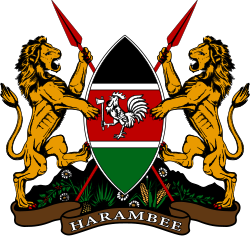| Constituencies of Kenya | |
|---|---|
 The 290 constituencies of Kenya | |
| Category | Electoral district |
| Location | Kenya |
| Number | 290 (as of 2012) |
| Government | |
| Subdivisions |
|
 |
|---|
The constituencies of Kenya are used to elect members of the National Assembly, the lower chamber of the Kenyan Parliament. In accordance with Article 89 of the 2010 Constitution of Kenya, there are 290 constituencies, based on a formula where these constituencies were to be delineated based on population numbers. Each constituency returns one Member of National Assembly. The constituencies are further divided into electoral wards.
Contents
- Overview
- Former Coast Province
- Former North Eastern Province
- Garissa County
- Wajir County
- Mandera County
- Former Eastern Province
- Marsabit County
- Isiolo County
- Meru County
- Tharaka-Nithi County
- Embu County
- Kitui County
- Machakos County
- Makueni County
- Former Central Province
- Nyandarua County
- Nyeri County
- Kirinyaga County
- Murang'a County
- Kiambu County
- Former Rift Valley Province
- Turkana County
- West Pokot County
- Samburu County
- Trans-Nzoia County
- Uasin Gishu County
- Elgeyo-Marakwet County
- Nandi County
- Baringo County
- Laikipia County
- Nakuru County
- Narok County
- Kajiado County
- Kericho County
- Bomet County
- Former Western Province
- Kakamega County
- Vihiga County
- Bungoma County
- Busia County
- Former Nyanza Province
- Siaya County
- Kisumu County
- Homa Bay County
- Migori County
- Kisii County
- Nyamira County
- Former Nairobi Province
- Nairobi County
- References
- External links






